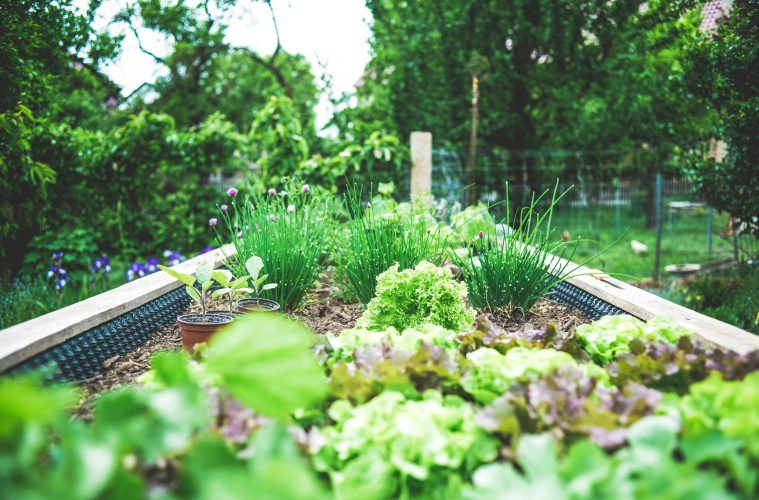Lasagna gardening might not produce a delicious Italian dish, but it offers a clever way to garden without the need for digging or tilling. This easy, fuss-free method is perfect for anyone who’s struggled with traditional gardening or just wants a low-maintenance option.
With lasagna gardening, you can start a new garden bed in just an afternoon, using layers of compostable materials to create rich, fertile soil.
What is Lasagna Gardening?
Lasagna gardening is a no-dig method where you build a garden bed above ground by layering organic materials like cardboard, newspaper, leaves, and grass clippings. These layers break down over time, creating nutrient-rich soil that’s perfect for growing plants. While the materials decompose, you can plant directly in the top layer, making this a quick and effective way to start a garden.
@thefrenchiegardener Small space & High Yield 🌿 Build a lasagna garden bed 💚 Learnt this technique from @permacultureaujardin and it is truly impressive. Green Love to you 💚 #gardening101 #permaculture #growyourownfood #gardeningtips ♬ In the presence of Angels – Braam Official
Why choose Lasagna Gardening?
This method is not only easy but also environmentally friendly. By using materials that might otherwise be thrown away, lasagna gardening helps reduce waste and promotes organic growing. Additionally, the layered approach helps retain moisture, which means you’ll use less water. It’s an excellent choice for gardeners on a budget or anyone looking for a sustainable way to garden.
How to start your Lasagna Garden
Getting started with lasagna gardening is straightforward and fun. Here’s a simple guide to help you create your own lasagna garden.
@learntogrow1 These bulbs were planted by layering last November. Love how it turned out! #gardenproject #springflowers #gardening #pollinators #containergarden ♬ Spring – TELL YOUR STORY music by Ikson™
1. Choose your spot
Find a flat area in your garden that gets at least six hours of sunlight a day. Make sure it’s near a water source but far enough from your home to avoid any unpleasant odors from the decomposing materials.
2. Gather your materials
You’ll need a mix of high-carbon (brown) and high-nitrogen (green) materials:
High-carbon materials: Dried leaves, straw, peat moss, mulch, and sawdust.
High-nitrogen materials: Grass clippings, vegetable scraps, coffee grounds, and manure from plant-eating animals.
Base layer: Newspaper or cardboard to cover the ground and smother any existing grass or weeds.
If you’re short on materials, you can use a soil mix designed for raised beds as a substitute for the carbon layer.
3. Layer it up
Start by laying down your base layer of wet newspaper or cardboard, making sure to cover the entire area. Then, follow these steps:
- Add a layer of high-carbon materials (the brown layer).
- Add a thinner layer of high-nitrogen materials (the green layer) – ¼ the thickness of the carbon layer.
- Continue layering until your garden bed reaches a height of 45-60 centimetres.
@sabrina.sustainable.life Replying to @aimee__eliza heres a drafted video inspired by @relauren which shows our process. we bought the beds from home depot and used the lasagna method to fill them up! as sheet composting, is a method of creating a new garden bed by layering organic materials on top of the soil rather than digging into it. This method is nice because it is a low-effort way to create a garden bed without the need for tilling or disturbing the soil. #gardening101 #lasagnamethod #gardeninghacks #gardeningtips #gardentok #beginnergardener #lasagnagardening #lasagnagarden #earthmonth ♬ original sound – Goowatitdew
4. Let it “Cook”
If you’re preparing your lasagna garden in the fall or aren’t planning to plant immediately, you can let the layers break down naturally over time. Covering the bed with plastic can help speed up the decomposition process by trapping heat.
5. Plant your garden
If you want to plant right away, you can do so by sowing seeds on the top layer or planting seedlings. Just make sure that any manure or compost is well-decomposed to avoid damaging the roots of your plants.
6. Maintain your Lasagna Garden
As the season progresses, continue adding compostable materials to the top of your garden bed, keeping the 4:1 ratio of carbon to nitrogen materials. Pull weeds as they appear and water as needed. In subsequent seasons, you can add new layers to keep your garden thriving.
@garden_with_tom Creating a Spring Bulb Lasagne A continious flow of beautiful spring flowers between March and May. I’m getting very excited about the forthcoming spring bulb planting season, from September onwards. To get you thinking here’s the bulb lasagne planting technique for creating a Springtime packed with flowers. To do the same as me Pre Order your Spring Bulbs with my 10% off promo code GWTBULBS2024 at www.bostonseeds.com What beautiful troughs and pots for the garden. I’ve got a 5% discount promo code TOM5 for you at www.heritagepotcompany.co.uk @heritagepotcompany I’ve got a 10% discount promo code GWT10 for you at www.fieldcompost.co.uk @Field Compost Ltd on Field No.23 Professional Peat Free Potting Compost 👍 #springbulbs #springbulbs🌷 #springbulbplanting #allium #alliums #daffodil #daffodils #hyacinth #hyacinthus #hyacinths #bulblasagne #bulblasagna #garden #gardening #gardening101 #gardeninghacks #gardeningtips #gardeningtools #gardeningtiktok #gardeninghack #gardeningideas #gardeningtipsforbeginners #gardeningforbeginners #gardenersworld #gardeners #gardenersoftiktok #gardenerslife #gardenersofinstagram #gardenersfriend #gardenersofthegalexy #gardenwithtom ♬ original sound – Tom Strowlger
With lasagna gardening, you can create a rich, fertile garden bed using everyday materials, making it a smart and sustainable way to grow your favourite plants. Whether you’re planting veggies, herbs, or flowers, this method will help you achieve a flourishing garden with minimal effort.
ALSO SEE: HOW TO BUILD A SPIRAL HERB GARDEN
Image: Pexels

